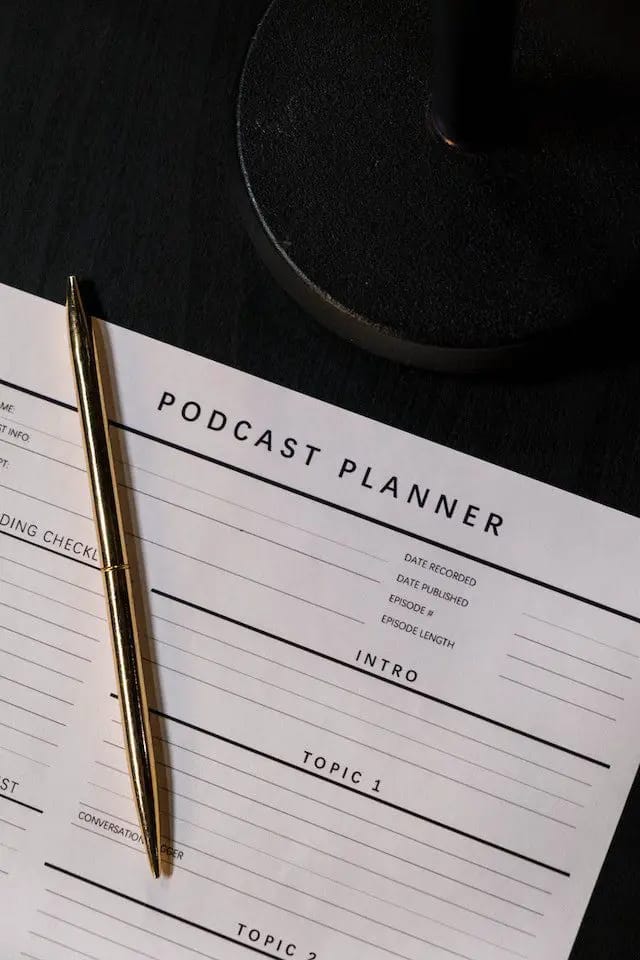
Some of the links in this post are affiliate links, which means I may earn a small commission at no extra cost to you if you make a purchase. Your support helps keep this blog running, and I only recommend products I believe in. Thanks for being a part of this community! Here's how it works.
Are you thinking about starting a podcast but don’t have an audience yet? Don’t worry, you’re not alone! Starting a podcast with no audience can be a bit daunting, but it’s definitely possible. In fact, many successful podcasters started from scratch and built their audience over time. In this post, we’ll go over some tips and tricks for starting a podcast with no audience.
How Do I Start a Podcast With No Guests?
Starting a podcast with no guests can be challenging, but it’s not impossible. Here are some tips for getting started:
- Choose a topic that you’re passionate about: If you’re going to be doing a solo podcast, it’s important to choose a topic that you’re passionate about. This will help you stay motivated and engaged with your audience.
- Create a content plan: Once you’ve chosen your topic, create a content plan for your podcast. This will help you stay organized and ensure that you always have something to talk about.
- Invest in good equipment: While it’s possible to start a podcast with just a smartphone, investing in good equipment will help improve the quality of your podcast and make it more enjoyable for your listeners.
How do I Start a Podcast With Nothing?
Starting a podcast with nothing can be a bit more challenging, but it’s still possible. Here are some tips for getting started:
- Choose a format: Consider what format you want your podcast to take. Will it be an interview-style show? A solo podcast? A panel discussion? This will help guide your content creation and make it easier to get started.
- Develop a content plan: Similar to starting a podcast with no guests, developing a content plan will help guide your podcast creation and ensure that you always have something to talk about.
- Promote your podcast: Once you’ve created your podcast, be sure to promote it! Share it on social media, your website, and other relevant platforms to help build your audience.

Podcast Equipment Recommendations For New Podcasters:
Microphone:
A good quality microphone is essential for producing high-quality audio. Some popular options for beginners include:
Headphones:
It’s important to use headphones while recording to monitor your audio quality and ensure that there’s no background noise. Some good options include:
Learn more about Audio-Technica Headphones in my detailed review.
Audio Interface:
An audio interface helps to connect your microphone to your computer and allows you to control the audio levels. Some popular options for beginners include:
Pop Filter:
A pop filter is a screen that attaches to your microphone and helps to reduce popping sounds caused by plosives (such as “p” and “b” sounds). Some good options include:
Recording software:
There are a variety of recording software options available, both free and paid. Some popular options for beginners include:
- Audacity (free)
- GarageBand (Mac only)
- Adobe Audition (paid)
Keep in mind that while investing in quality equipment can help improve the overall quality of your podcast, it’s not necessary to break the bank when you’re just starting out. There are many affordable options available that can help you produce a professional-sounding podcast.
Can a podcast Have No Guests?
Absolutely! While many podcasts feature guests, it’s not a requirement. There are many successful podcasts that are solo shows or feature just the hosts discussing a topic. As long as you have a clear and engaging topic, you can create a successful podcast with no guests.

How Do I Get My First 1000 Listeners on a Podcast?
Getting your first 1000 listeners can be challenging, but there are some steps you can take to help build your audience:
Promote your podcast:
As mentioned earlier, promoting your podcast on social media, your website, and other relevant platforms can help build your audience.
Collaborate with other podcasters:
Consider collaborating with other podcasters in your niche. This can help you reach a new audience and build your credibility in the space.
Optimize your SEO:
Make sure your podcast is optimized for SEO by including relevant keywords in your title, description, and tags.
Engage with your audience:
Engage with your audience by responding to comments, asking for feedback, and creating a community around your podcast. This can help build loyalty and encourage listeners to share your podcast with others.
Final Thoughts
In conclusion, starting a podcast with no audience is possible. By choosing a topic you’re passionate about, developing a content plan, and promoting your podcast, you can build a successful podcast from scratch. Don’t be afraid to experiment and try new things – with time and dedication, you can grow your audience and create a podcast that resonates with listeners.
